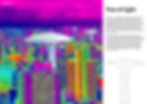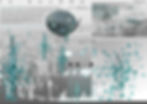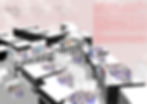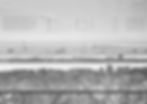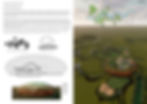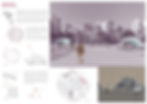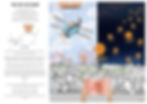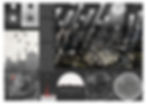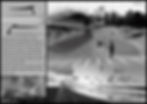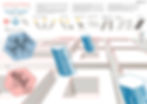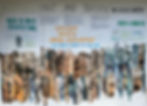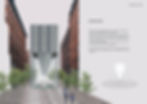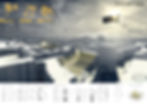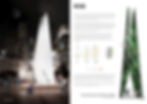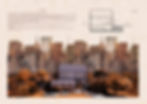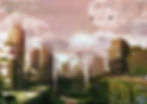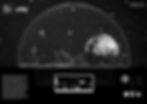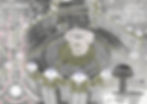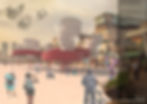FRAMEWORK
Ideasforward is a platform founded in 2014 with the objective of organizing international architectural competitions.
In 2020, we will expand our activity through the introduction of debates, exhibitions, formation and development of partnerships with other entities with common goals.
We believe that the future depends on valuing architecture through the education of society as a whole. This is how the partnership between IF and Exposalão is born, which, for the first time, are launching an 'architectural award' edition - DECOR HOTEL DESIGN AWARD.
about us
About us
24h competition
24h competition
24h competition
24h competition
about us
about us

FRAMEWORK
The city is a complex articulated system that needs to be powered by energy. This energy is freely available to us from nature, we just need to know how to use it.
On the other hand, as worldly beings, we need shelter and protection from this energy ...
One of the great challenges of humanity for the coming years is to make the world a sustainable place, particularly cities, towns and villages, with integrated and environmentally friendly measures, without the capitalist and economic side dominating the process and controlling it.
Is it possible to turn urban equipment into energy pickups?
“Nothing is more precious than light; but excess overshadows.” Jewish texts
lightshadow
In a society dominated by the technological revolution and where light becomes the engine of progress, we need some shade to look more human and worldly.
light;
energy;
sustainability;
humanity;
future;
shadows;
cities;
PROGRAM
Theme: urban shadows batteries
Objective:
From a mechanical point of view, we want integrated solutions for cities that are energy-enhancing for their needs, so that they become increasingly self-sustaining. On the other hand, we want these solutions to be directly linked to the human side, enhancing quality urban spaces for families.
Is it possible to produce shadow and energy at the same time?
Program: No specific programs
Areas: Not specific areas.
Location: Urban context.
JURY


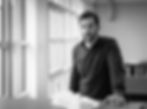


1st Place

ID000300
Team: Mohammad Sadegh Kaveh, Camilla Vespa
City: Milan
Country: Italy
2nd Place

ID000200
Team: Reela Nentwich, Niklas Fissel, David Petsch
City: Berlin
Country: Germany
3rd Place

ID0001300
Team: Andreea Matei – Bota, Bianca Elena Buga, Carmen Maria Teodorescu
City: Bucuresti
Country: Romania
Honorable Mentions

ID0001000
Team: Andrés Arias
City: Medellín
Country: Colombia

ID000270
Team: Alexander Mavlenkin, Pavel Moiseev, Evgenii Zimin, Pavel Korolev, Victoria Daue
City: Moscow
Country: Russian Federation

ID0002100
Team: Sina Shafieyari, Peyvand Taheri
City: Milan
Country: Italy

ID000260
Team: Christopher Ayumu Nakahara, Sebastian Gilberg
City: Aachen
Country: Germany

ID000120
Team: Matias Gabriel Luquet, Bernardo Lino Leithold, Marcos Manuel Álvarez, Pedro Ignacio De la Vega
City: Córdoba
Country: Argentina

ID0001530
Team: Niken Wulandari Sutanto, Sze Yin Sherri Goh, Shosaku Takahashi
City: Singapore
Country: Singapore

ID0001270
Team: Tania Mardaloescu
City: București
Country: Romania
Final Comments
24H competition 32nd edition – lightshadow
"In the competition with the theme "Urban shadows batteries", the great challenge was to evaluate meticulously the more than 80 proposals submitted, many of them inspired by well-known projects that respond to the theme of the contest, but without major innovations. Another large portion of the proposals opted for unviable or playful execution solutions. One of the proposals was actually interesting because of its “manifest” character, which is also a way of questioning the search for innovative solutions with limited economic viability, demonstrating that we have all the elements to produce improvements in the quality of our cities in terms of producing shadow and energy. Many ideas of simple implementation that could certainly have a great impact on the quality of life of city users." Joanna Helm, arch
"Interesting questions, and fascinating as well as terrifying that so many tries to solve these challenges through dystopian concepts and biodomes. Let’s hope we can achieve a more self-sustainable urbanism through planting trees, collecting rainwater and harvesting sunlight on a smaller scale before we start incapsulating the whole globe." Arne Myklestad, arch
"This contest brought us one of the big questions of today, that is, how we can minimize environmental problems and how we can use technology rationally for the benefit of a healthy life." Rui Oliveira, arch
Winners
1st PLACE - ID000300:
"The channeled fluidity that crosses the city, constituting a rich and exuberant artery, is a consistent idea of joining a greenhouse, protection to the elements, the ability to collect energy, feeding the great oxygen producers and carbon collectors." Mário Chaves, arch.
"Sometimes the most creative answer is the simple solution, and planting trees is the answer that is staring us in the face. What is a natural, cost-efficient, democratic and feasible way to create shadow and convert sunlight into clean air, fresh soil and bio diversity? Trees! The solar panels could create extra energy, and affect micro climates in the future. Can be implemented in existing cities and expand with need." Arne Myklestad, arch.
"This is the proof that simple solutions are the smartest to achieve excellent sustainability results. The environments provided answer many questions and prove to be the most suitable for human beings." Rui Oliveira, arch.
"The winning project presents a simple solution that harmoniously unifies nature and technological elements, in response to the thematic proposal of the competition. A concise and creative concept of sustainability with easy execution and adaptability to any urban context. Consisting of a series of routes that extend and connect different areas of the cities where they could be implemented. The presentation objectively explains the proposed solutions in a subtle and delicate way." Joanna Helm, arch.
2nd PLACE - ID000200:
"In the face of the global warming storm, the ability to create recreational and protective clouds, fostering micro climates and the ability to adjust to needs, and on the condition of feeding on recyclable and alternative energy, calls for very intense urban comfort." Mário Chaves, arch.
"The idea presented has an innovative and original design, with rational use of technology, and formally not aggressive to the urban context. The concept is quite bold and efficient. Probably your greatest difficulty would be in the feasibility of execution and implementation. The well-prepared presentation clearly exemplifies that the proposal could be inserted imperceptibly in the urban context. The sustainability of the project itself is its biggest challenge." Joanna Helm, arch.
"The proposal suggests an artificial angle to a natural solution that might be highly attractive in an urban environment. It’s got a strong conceptual quality, though similar designs has been proposed and tested before." Arne Myklestad, arch.
"This proposal leads us to an idea that today seems distant to us, but which may be closer than it seems. What better sense could it have, if we could use technology to our advantage?" Rui Oliveira, arch.
3nd PLACE - ID0001300:
"The tree is the great natural friend of civilization; the canopy protects, anchors in the earth, they are fixed in solidarity in the cities, static and immobile, waiting for the love of the citizens. therefore, trees will be a qualified commitment and of solidarity value, for urban, conditioned and saturated environments. the trees, these, will qualify the urban elements and the citizens." Mário Chaves, arch.
"Technology only makes sense if it is for human benefit, taking advantage of everything that nature offers us. In this concept of urban park, we can appreciate the mechanics taken from nature and applied to architectural equipment." Rui Oliveira, arch.
"The proposal mimics a natural process, and is a feasible solution done in a quite rational way. It still lacks a bit of originality, and is presented on an urban square rather than being tested in a dense, urban environment where it might not work as well” Arne Myklestad, arch.
"The design of the proposal is a type of evolution or rereading of similar existing solutions, but with good acceptance on the part of users when introduced in urban contexts. The project's viability is proven to be effective and the proposed elements present a pleasant disposition in their implementation and contemplate the needs related to sustainability. The presentation of the project was very well prepared and discusses the proposed solutions in a clear and objective way." Joanna Helm, arch.
Gallery
